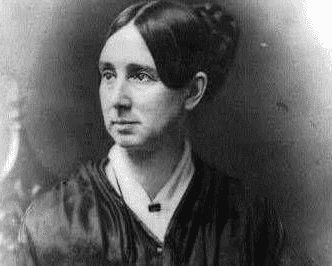Dorothea Dix and the Mental Hygiene Movement

Have you ever heard of Dorothea Dix? Unfortunately, most people have never heard of this incredible woman. Dorothea Dix was a pioneer of mental health reform and made important contributions in her field. Her tireless dedication improved living conditions and treatment for people with mental illnesses.
Dorothea Dix (1802-1887) didn’t have a very happy childhood. She grew up in the United States with an alcoholic father and a mother with serious psychological disorders. Consequently, she was deeply sensitive to the disadvantaged and social outcasts. Her experiences led her to create the mental hygiene movement.
At the age of 39, Dorothea Dix started volunteering at a prison for women with mental health problems. This made a lasting impression on her and gave her ideas for her movement. The primary goal of her movement was to make decent psychological treatments available for everyone, including the homeless. This simple idea led to significant changes. It helped implement what we know as moral treatment and changed the sanitary conditions of mental health institutions.

The “insane”: Marginalized from society
At the beginning of the 18th century, people with signs of serious mental health problems were labeled “insane”. Basically, people believed that they lacked any judgment or reason. They were treated like wild animals that had to be locked up in insane asylums. They were also the object of ridicule and contempt. The conditions in the insane asylums were inhumane. For example, patients were beaten, starved, isolated, and forced to ingest chemical substances.
One of the factors that helped change the situation was a treatment given to King George III. He was known as “Mad King George” because he suffered from porphyria. His doctors tried an unusual treatment for his illness, which was giving him large quantities of donkey milk. In light of this treatment’s success, a budding social optimism emerged about the possibility of using therapeutic interventions for patients with mental problems.
Moral treatment: Humane and individualized treatment
From there, society got closer and closer to a psycho-social approach to mental illness. The first half of the 18th century was defined by the principles of the Enlightenment. Recognition of individual rights became a necessity. In this context, “moral treatment” was born.
People associated this term with emotions and psychology. It was closely related to the idea that there is a behavioral code that everyone should follow. Some of the basic tenants of moral treatment were the natural and respectful treatment of hospitalized patients. Interpersonal interaction and contact were very important, as well as individualized attention.
These ideas were a complete departure from the previous beliefs about mental health and mental patients. They embraced humanity, individualization, and the careful cultivation of social relationships. In fact, moral treatment in Europe and the United States was what transformed insane asylums into livable places that had the patient’s recovery in mind.
The decline of moral treatment
After the first half of the 18th century, this therapeutic strategy went into a decline. That was because of the many patients who were seeking help at these mental health institutions. This increase was due to a variety of factors. One of those was the arrival of immigrants after the U.S. Civil War. Another was Dorothea Dix’s mental hygiene movement. The unexpected and direct consequence of her movement was the disproportionate increase in hospitalized patients.
When Dorothea arrived in England, she began to have lung problems. During her illness, she talked to many theorists who helped her learn about different approaches to mental health. Among them were moral treatment, the contrast between life in solitude and life in society, the elimination of mechanical restrictions, and occupational therapy with patients.
Dix was also able to visit a women’s hospital while she was a volunteer. She saw for herself the patients’ deplorable living conditions. The situation shocked her so much that she decided to commit herself fully to the cause. That was when she started visiting all kinds of mental health and correctional facilities. Her goal was to fully understand the mistreatment and abuses that patients experienced so she could change the situation. From there, her mental hygiene movement advocated for eliminating social prejudice. She and her followers fought for basic human dignity.

Mental institution reform
Dix managed to gather sufficient proof of the problem to be able to appeal to the Massachusetts Legislature. As a result, she was able to change the terrible living conditions of mental health patients. Not only that, but she shed some light on the mistreatment they experienced. She published her book, Remarks on Prisons and Prison Discipline in the United States, in 1845. This book helped establish psychiatric hospitals in eleven states throughout the country.
Dorothea Dix might not be one of the most famous women in history. However, her contributions to the mental health field were significant. Her tireless dedication brought ethics and morals back into therapeutic strategies for mental health patients.
In conclusion, without her work, it’s possible that patients would have continued to be mistreated for decades. Dix and others fought bravely to reform these institutions. We now know them as promoters of a new era of intervention and treatment for people with mental illnesses.
This text is provided for informational purposes only and does not replace consultation with a professional. If in doubt, consult your specialist.








